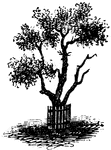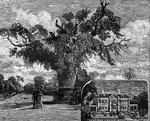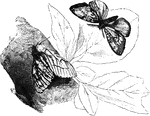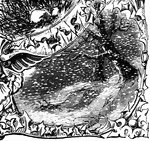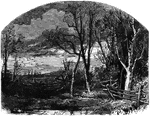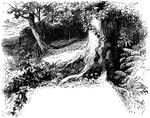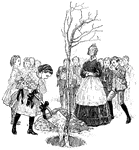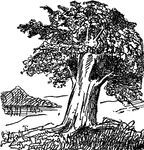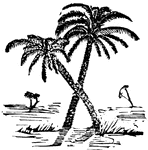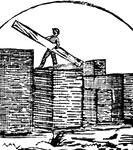
Morven
"Morven, Stockton's estate. This sketch is from the lawn in front, which is shaded by venerable pines…

Jamestown Island
"Distant view of Jamestown Island. This view is from the north side of what was once a marsh, but now…

Monticello
"Monticello, Governor Jefferson's place of retirement. This venerated mansion is yet standing, though…

Hobkirk's Hill
"View at the Spring; Hobkirk's Hill. It is at the hed of a ravine, scooped out of the northeastern slope…
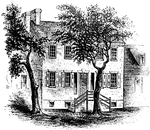
McIntosh's House
"Dwelling of General McIntosh. This house is the third eastward from Drayton Street, and is said to…

Buffalo
"The Buffalo. As the game upon which they depended moved about the country, so the Indians roved in…

Charter Oak
"The Charter Oak. In Hartford the colonial government met to deliver up the charter. It was evening,…
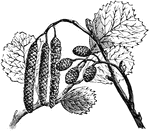
Alder
"The popular name of shrubs and trees belonging to the geenus Alnus, natural order Cupuliferæ."-Whitney,…
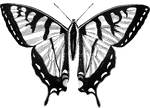
Troilus Butterfly
"The Troilus Butterfly, Papilio Troilus, is a superb insect, the wings denticulated, black,…

Chrysalis of the Luna Moth
"Among the larger and more splendid moths of our own country is the Luna Moth, or Green Emperor Moth,…

Luna Moth
"Among the larger and more splendid moths of our own country is the Luna Moth, or Green Emperor Moth,…

Caterpillar of the Luna Moth
"Among the larger and more splendid moths of our own country is the Luna Moth, or Green Emperor Moth,…

Cecropia Moth
"The Cecropia Moth, A. Cecropia, is of a dusky reddish-brown; the wings expand six inches,…

Mygale
"The spiders with which we in temperate climates are most acquainted are of small size, but in hot regions…

Purse-crab
"The Purse Crab, Birgus Latro is a very curious species found in Amboyna and some of the adjacent…
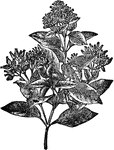
Cinchona
"Cinchona is a genus of trees found exclusively on the Andes in Peru and adjacent countries, and recently…
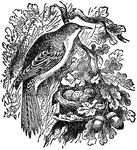
Common Creeper
"Creepers are a family of birds which strongly resemble the woodpeckers in their habit of creeping on…
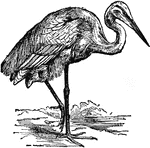
Heron
"Heron is the common name of birds of the genus Ardea. The herons are distinguished by having a long…

Vanilla Planifolia
"Vanilla is a genus of epiphytal Orchideæ, natives of tropical America and Asia. They are distinguished…
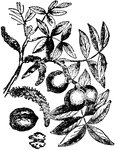
Walnut
"Walnut is a genus comprising seven or eight species of beautiful trees. The common walnut is a native…
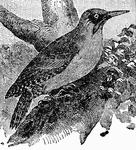
Green Woodpecker
"Woodpecker is the popular name of the old Linnæan genus Picus, now greatly divided. Woodpeckers…
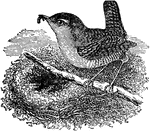
Wren
"Wren is a genus of birds, having a slender, slightly curved, and pointed bill; the wings very short…
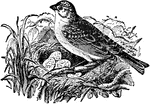
Yellowhammer
"The Yellow Hammer, or Yellow Bunting, is a bird widely distributed over North America and Europe. It…

Kinkajou
"Kinkajou is a genus of carnivorous mammals. They have prehensile tails, with which they hang on to…

Mistletoe
"Mistletoe is a plant parasitic on the apple and other fruit trees, on the thorn, the oak, the poplar,…

Myrtle
"Myrtle is a genus of plants, natural order Myrtaceæ, consisting of aromatic trees or shrubs,…

Myrtle Flower
"Myrtle is a genus of plants, natural order Myrtaceæ, consisting of aromatic trees or shrubs,…

Quassia
"The Quassia is a tree cultivated in the West Indies and the parts adjacent. It has terminal clusters…
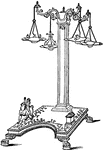
Candelabrum
"Originally a candlestick, but afterwards the name of a stand for supporting lamps, in which signification…

Seventeen Year Locust
The Seventeen Year Locust (Cicada septendecim) spends seventeen years underground feeding on the roots…
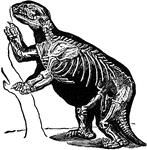
Giant Sloth
"Sloth is the popular name for any individual of the Edentate group Tardigrada, from their slow and…
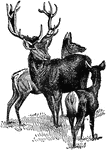
Stag
"Stag, or Red Deer, is a typical species of deer, occurring in the N. of Europe and Asia. It was once…
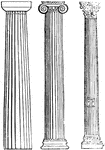
Columna
"A pillar or column. The use of the trunks of trees placed upright for supporting buildings, unquestionably…
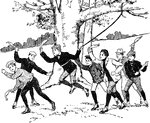
Sling the Monkey
"Sling the Monkey is a capital game, and can be played anywhere where there are trees. One player who…
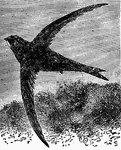
Common Swift
"The Swift, like swallows in many respects, their structure is almost entirely different, and some naturalists…
Abatis
"Abatis consisting of trees lying parallel to each other with the branches pointing in the general direction…

Slashing
"An abatis formed by felling trees toward the enemy, leaving the butt hanging to the stump, the branches…

Fruit Gathering Monkeys
"Monkeys appear to have been trained to assist in gathering fruit; and the Egyptians represent them…
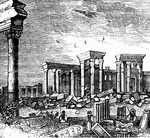
Palmyra
"Amid the barren deserts of Arabia, a few fertile spots of soil arise out of the sandy waste, like islands…
